Children of Drones
The culture of warfare is in a constant state of transformation as society seeks to maximize the way battles are won while subsequently increase the loss of human life. Like the advent of the airplane, the tank, and the gun, the drone is poised to be the future weapon of the battlefield. Remote control and robotized weapons of war have become essential to modern warfare and will only continue to grow in popularity as war fighting machines. The unspoken reality behind the development of this defense technology is that drones are increasingly operated by 86 nation-states around the world, 19 of whom have or are acquiring armed drone technology, leading to an estimated 360 drone deaths per month under America’s current administration alone. Meanwhile, the dialogue around drones largely precludes public discourse over policies, which have grave long-term effects on the lives of thousands of civilians and families in conflict zones around the world.
Digitally altered drone drawings by American children, age 6-16.









As a veteran of the US military and the Iraq war I was privileged to a perspective of conflict that greatly informs my work and mission as an artist. As the child of an Egyptian father, I have long struggled to reconcile my national loyalties vis-a-vis a proud American heritage dating back to the American Revolution, with my Arab background. My muslim Egyptian family was deeply unsettled by my participation as an American soldier in a war that was seen as wholly criminal and unjust by most of the Arab world. Meanwhile, my US military colleagues, largely indoctrinated by the jingoistic drumbeat to war, were ready and willing to embark on an invasion of Iraq under the guise of “protecting the homeland from terror”. My service in Iraq shed light on the gratuitous injustices perpetrated against both the Iraqi and American people. I found the people of Iraq, much like most Egyptians and Americans, mostly to be warmhearted, generous and compassionate. I came back to America devoted to making work that gives voice to the under represented issues caused by conflict. These inherent similarities are shared by all people, separated only by perspective. This realization grew into a feeling of deep remorse for my participation in the complete and utter destruction of a nation-destruction that from my vantage point was clearly an act of aggression motivated by economic gain, control over natural resources, and by personal vendetta. Shadowed by guilt in my post war years, I have spent much of my time on an internal exploration of my own identity and how it is shaped by geography, politics, family, conflict and childhood. Coming to terms with the complexities of this identity and how it has been informed by my lived experiences from a young boy, to a soldier, and now an artist, has been a tumultuous journey that has both nurtured and destroyed many deeply personal bonds with family and friends. My experiences have also solidified an understanding of the grave consequences of war on children and the attempts to alleviate the residual scares in their upbringing. Without their healthy and sound minds, humanity has little hope for a peaceful and prosperous future, and our decisions as individuals, communities and nations have permanent effects on the lives and psyches of future generations.
Handmade drone plush toys based on above drawings.
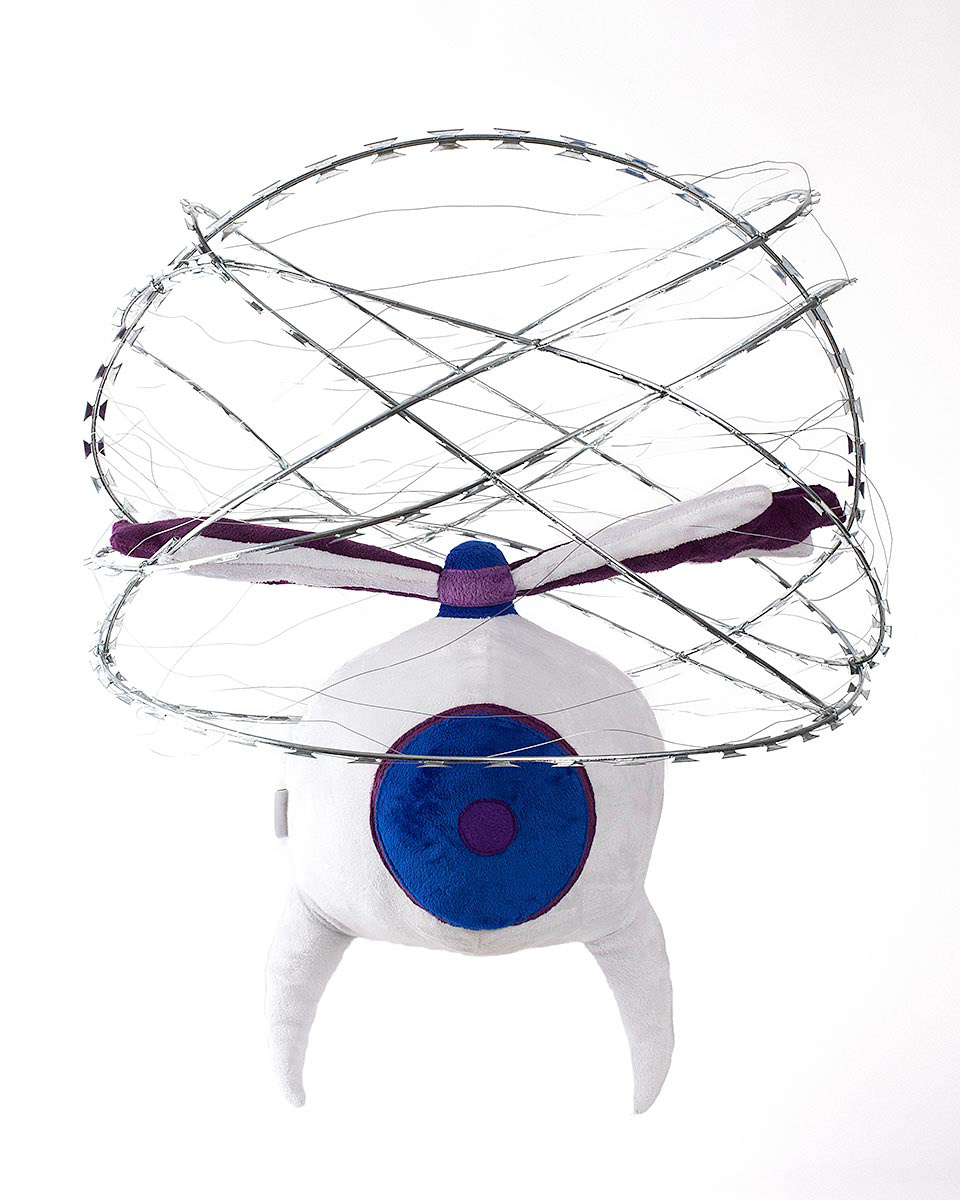
Leslie Age 16 United States, 2018, Mixed Media, 26” x 22” x 22”
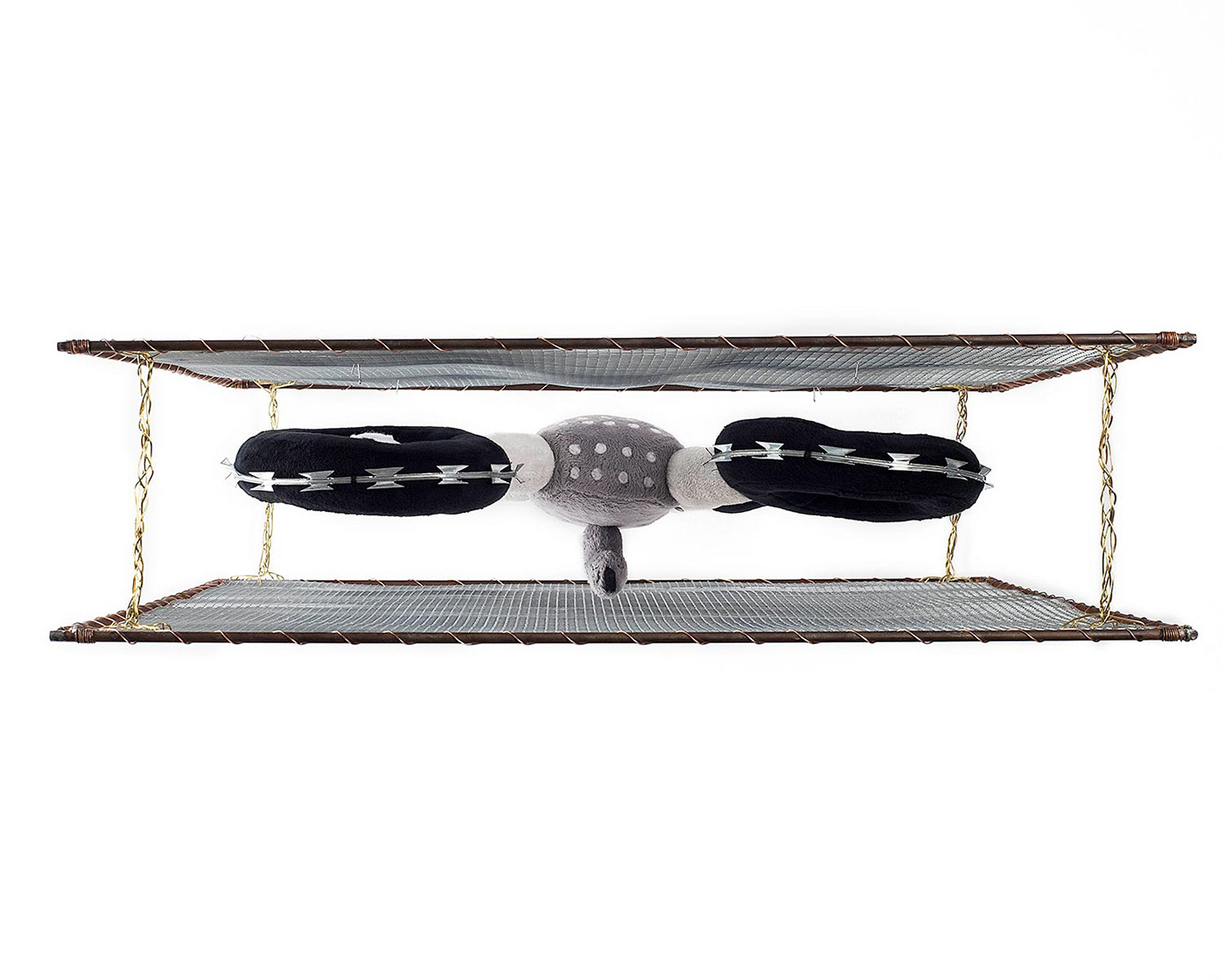
Gio Age 12 United States, 2017, Mixed Media, 25” x 25” x 7”

Lexi Age 10 United States, 2018, Mixed Media, 20” x 10” x 5”
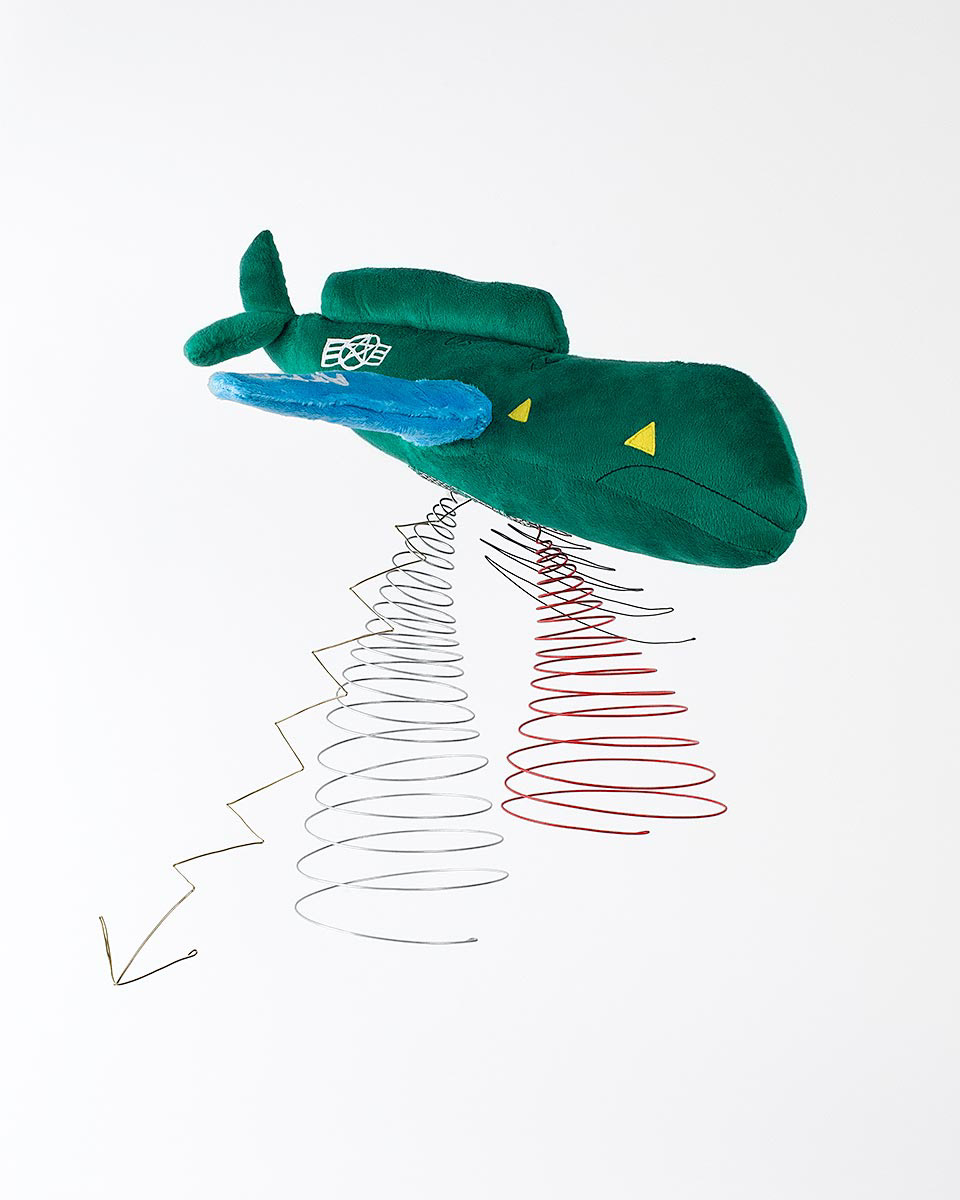
Giovani Age 13 United States, 2018, Mixed Media, 20” x 20” x 17”

Kevin Age 16 United States, 2018, Mixed Media, 43” x 17” x 5”
Children of Drones is an exploration of identity in crisis; it delves into the impact of war and its deleterious effect on the minds of young children in just one of many global conflicts. Children of Drones, documents and creates a living history of the disparate perspectives on warfare and the technology of war through the eyes of children in both the United States and war-torn Syria, while using the visual and tactile language of childhood expression in play. Through children’s drawings, Children of Drones focuses on the emotional and psychological effects this modality of warfare has on children. These images have been transformed into sculptural objects, hieroglyphic-like pictographs and an experiential environment of drawing and sculpture that envelops the viewer in a recreation of refugee housing. Children of Drones embodies the many conflicting influences on children's minds and their reaction to them in this tumultuous environment.
Digitally altered drawings by Syrian girls in Lebanese Refugee Camp, age 13-18.



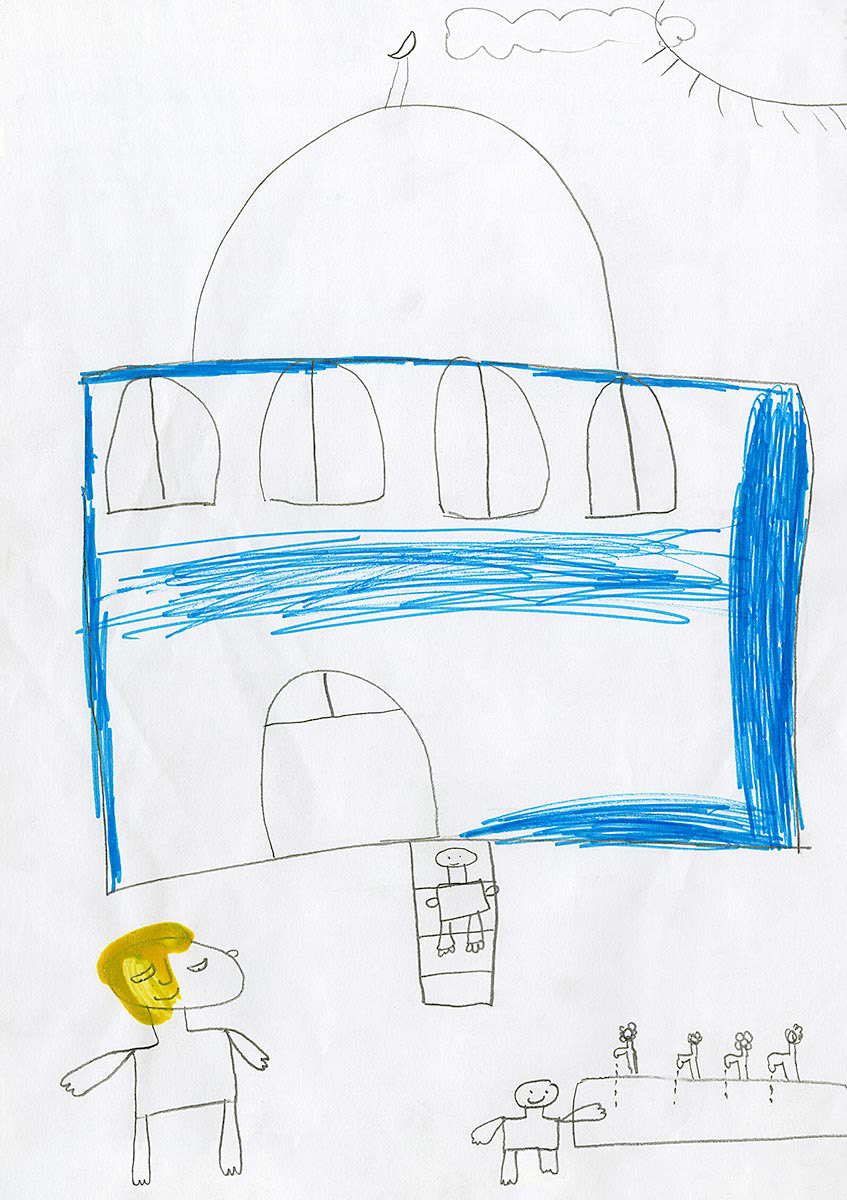
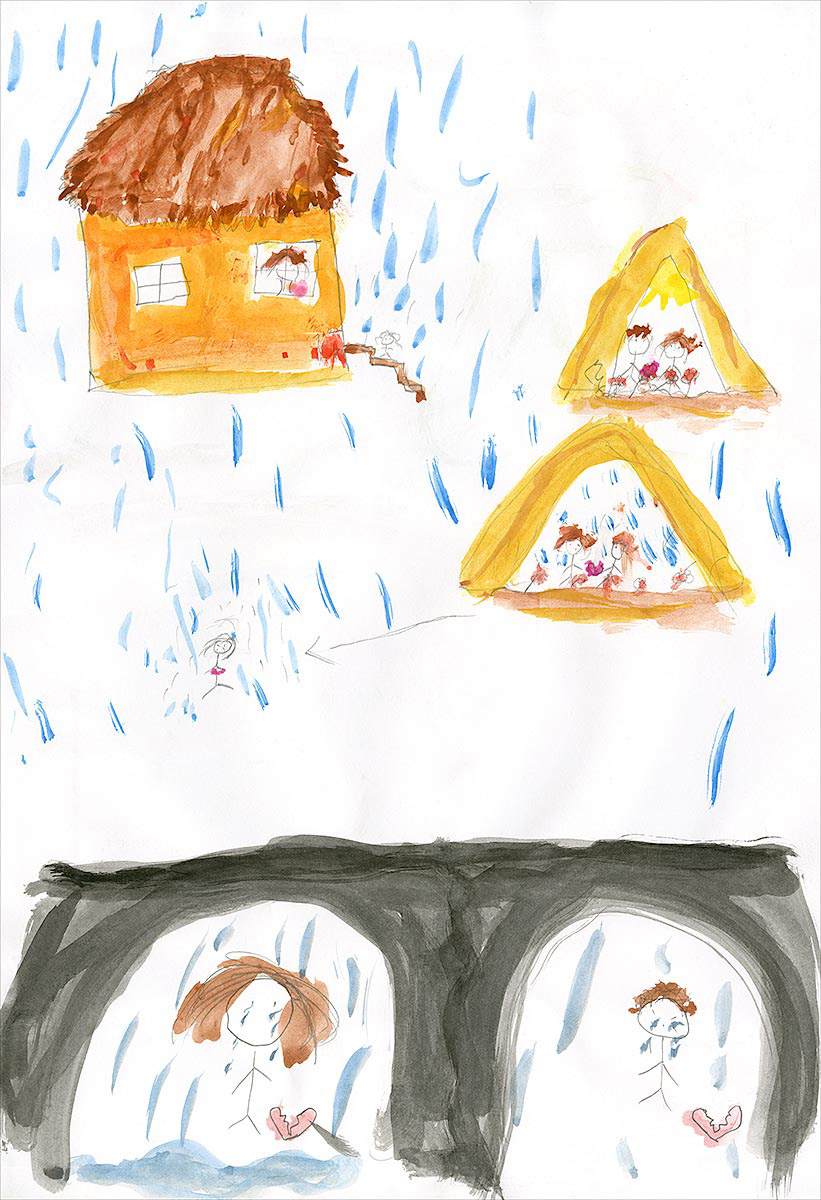

To contrast the drawings of children displaced by the Syrian war, depictions of drones have been produced by American children living safely at home and only constrained by the limits of their own imagination. The American children's images have been reproduced through my lens and transformed into plush toys, with a twist. These sculptures visually imitate how drone technology is soft-sold and neutralized to the American public, while the drawings by Syrian children depict the emotional and psychological fragility of children on the receiving end of this new era in warfare. This work explores the innocent and yet actively molded perspectives children have on either side of this discourse. Its materiality coaxes an urge to play, but presents objects that conflict with that urge through their respective physically and emotionally painful augmentations. Their drawings shed light on the contrast between children fortunate enough to live and create in an environment of freedom without fear of the impending effects of war, and children whose misfortune of geography and social status has placed them in a position to create from a place of fear and struggle in equal proportion to their impulse to create from a place of hope and joy.
Handmade plush dolls based on Syrian refugee drawings.











Children of Drones is a collaboration between artists' and humanitarian efforts that transcend the insular communities where they are typically found. This diversity serves to expand a visual and experiential vocabulary of understanding by describing human journeys and stories in a new era of conflict. Mirroring the evolution of conflict, we are entering a new era in art where social responsibility is a driving force in the artist’s life, enabling the manifestation of works that have the capacity to bridge the gap between art, academics and the population at large.
Pictograph alphabet derived from refugee drawings.























This project was made possible with the generous support from the following partners:







